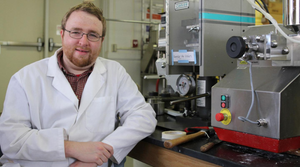Medical device review times are decreasing, and even faster reviews may be achievable through mandated changes under the recently renewed Medical Device User Fee Act (MDUFA), CDRH director Jeffrey Shuren told a Drug Information Association annual meeting session in Boston.Shuren said his center is excited about efficiencies expected from implementing its refuse-to-accept and refuse-to-file policies, which will “assure that we get the right information in the door in the first place and that we are spending our time wisely on quality submissions.”
August 16, 2013

MDUFA also provides additional personnel and will “assure that we have the right size for our divisions and branches, and that our frontline supervisors have appropriately managed workloads so that they can provide the right level of oversight and mentoring as necessary. . . . The good news is that things are headed in the right direction,” Suren said.
Standards development is very important at CDRH, Shuren told meeting attendees, but budget cuts under the sequester are taking their toll in this area. About one-quarter of the device staff is involved in standards development, he said. “We do think, in appropriate circumstances, if there is a sufficiently granular standard, then that could be a terrific help for companies in knowing what they need to do, and it’s good for our folks too in terms of providing a blueprint, at least for those applicable parts of the submission to which that standard might cover.”
The budget sequester has had an impact on standards development because cuts to travel make it difficult to send staff to international standards meetings, he explained.
Shuren told the session that CDRH encourages device sponsors to work with staff on deciding innovative ways of doing things “to get good enough information” for device approval or clearance. “We are used to, if you will, dealing with dirty data, and we are used to those challenging situations. And you will see us kind of pushing more on Bayesian analyses and approaches for both clinical trial design and assessment.”
Shuren said his team had put out the Innovation Pathway as a way to engage innovators far earlier in development “in a shared collaborative way for us to better understand newer technology.” He encouraged industry that if a regulatory pathway doesn’t exists for a technology, “then let’s try to figure out that pathway together.” As an example, Shuren pointed out the process used in the artificial pancreas and noted that industry will see more of that type of engagement in the future.
Shuren also noted that another opportunity for innovation would be to shift established premarket data needs into the postmarket setting, “either through a more formal data collection process or by leveraging the national medical device surveillance system as we start to get that off the ground.”
Joining Shuren at the session was CDRH Office of Device Evaluation director Christy Foreman, who discussed activities underway to help sponsors decide on the right study to conduct. “We are trying to make sure the data is what we need and not asking for more information than we need,” she said. “So we are trying to consider the best ways to work with sponsors, and we are looking at the presubmission process as a potential vehicle. The predecisional IDE process is another tool, which is outlined in a recent draft guidance document, that we are looking at to help allow us to review data and provide comment.”
[image courtesy of COOLDESIGN/FREEDIGITALPHOTOS.NET]
About the Author(s)
You May Also Like


